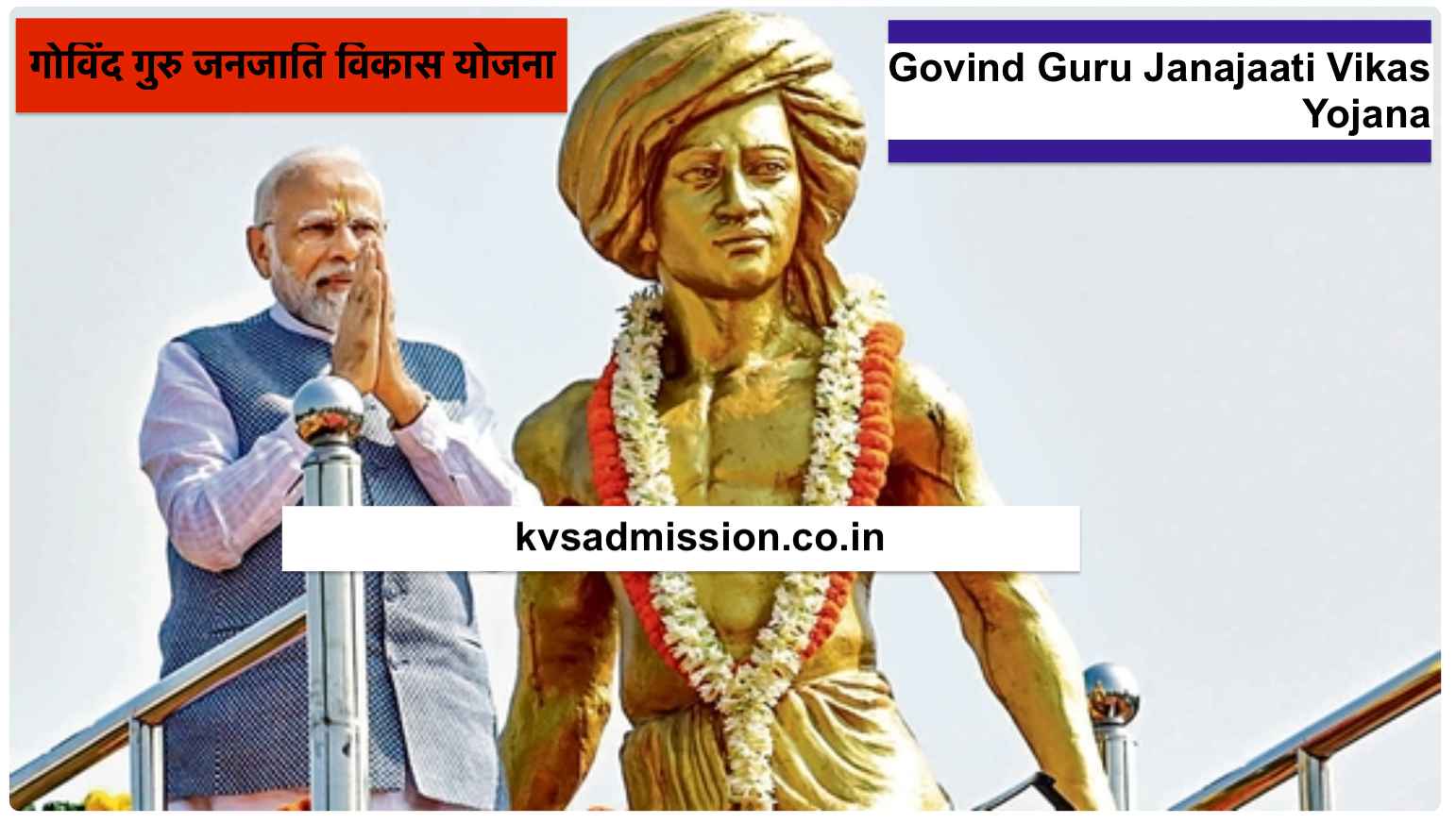Official Notification 2025 : Whatsapp Channel
Join Now
गोविंद गुरु जनजाति विकास योजना : Guru Govind Tribal (Janjati) Yojana 2024 Apply Online [Registration Portal], Eligibility, Date
Govind Guru Tribal Development Scheme : Key Points
- Objective : Enhance welfare and socio-economic status of tribal communities.
- Education : Quality education, scholarships, reduce dropout rates.
- Healthcare : Access to healthcare services, mobile units, nutritional support.
- Infrastructure : Development of roads, water supply, sanitation.
- Economic Empowerment : Skill development, self-employment support, promotion of traditional crafts.
- Cultural Preservation : Initiatives to promote and preserve tribal cultural heritage.
- Named After : Govind Guru, tribal leader and social reformer.
Guru Govind Tribal Scheme 2024 : गोविंद गुरु जनजाति विकास योजना
The Govind Guru Tribal Development Scheme is a transformative initiative by the Indian government aimed at uplifting and empowering tribal communities across the nation. Named after the revered tribal leader and social reformer Govind Guru, the scheme focuses on comprehensive development through education, healthcare, infrastructure, and economic opportunities tailored to the unique needs of tribal populations.

गोविंद गुरु जनजातीय विकास योजना भारतीय सरकार द्वारा संचालित एक परिवर्तनकारी पहल है, जिसका उद्देश्य देश भर में जनजातीय समुदायों को उठाना और सशक्त करना है। इस योजना का नाम प्रसिद्ध जनजातीय नेता और सामाजिक सुधारक गोविंद गुरु के नाम पर रखा गया है। यह योजना शिक्षा, स्वास्थ्य, अवसंरचना और आर्थिक अवसरों के माध्यम से समग्र विकास पर केंद्रित है, जो जनजातीय आबादी की विशिष्ट जरूरतों के अनुरूप है।
यह योजना जनजातीय समुदायों की कल्याण और विकास को बढ़ावा देने के लिए बनाई गई है। इसका लक्ष्य शिक्षा, स्वास्थ्य सेवा और रोजगार पर ध्यान केंद्रित करते हुए इन समुदायों के सामाजिक-आर्थिक स्तर को सुधारने के लिए विभिन्न लाभ और अवसर प्रदान करना है। यह पहल जनजातीय समूहों की सांस्कृतिक धरोहर को संरक्षित और बढ़ावा देने के साथ-साथ उन्हें मुख्यधारा समाज में एकीकृत करने का भी प्रयास करती है।
Govind Guru Tribal Development Scheme :
The Govind Guru Tribal Development Scheme is designed to enhance the welfare and development of tribal communities. The scheme aims to provide various benefits and opportunities to improve the socio-economic status of these communities, focusing on education, healthcare, and employment. The initiative also seeks to preserve and promote the cultural heritage of tribal groups while ensuring their integration into mainstream society.
Background of Govind Guru :
Govind Guru (1858-1931) was a prominent tribal leader and freedom fighter from Rajasthan. He played a crucial role in mobilizing the Bhil community against British colonial rule and worked tirelessly to promote social reforms, including education and health care. His legacy continues to inspire efforts aimed at improving the lives of tribal communities in India.
Objectives of the Scheme :
The Govind Guru Tribal Development Scheme is designed to address various socio-economic challenges faced by tribal communities. The primary objectives of the scheme include:
- Educational Enhancement: Providing quality education facilities and scholarships to tribal students to reduce dropout rates and promote higher education.
- Healthcare Improvement: Ensuring access to healthcare services, including mobile health units, community health workers, and nutritional support.
- Infrastructure Development: Developing basic infrastructure such as roads, water supply, and sanitation facilities in tribal areas.
- Economic Empowerment: Creating livelihood opportunities through skill development programs, financial support for self-employment, and promotion of traditional crafts and trades.
- Cultural Preservation: Promoting and preserving the rich cultural heritage of tribal communities through various cultural programs and initiatives.
Key Components :
- Education Initiatives :
- Establishment of residential schools and hostels for tribal students.
- Scholarships and financial aid for students pursuing higher education.
- Vocational training centers to enhance employability.
- Healthcare Services :
- Mobile health units providing primary healthcare services in remote areas.
- Training programs for local health workers and traditional healers.
- Nutritional programs targeting maternal and child health.
- Infrastructure Projects :
- Construction and maintenance of roads to improve connectivity.
- Installation of water supply systems and sanitation facilities.
- Development of community centers and recreational facilities.
- Economic Development :
- Skill development programs in various trades and crafts.
- Financial assistance for setting up small businesses and cooperatives.
- Marketing support for tribal products to reach broader markets.
- Cultural Programs :
- Documentation and promotion of tribal art, dance, music, and festivals.
- Establishment of cultural centers and museums.
- Support for traditional artisans and performers.
Implementation and Impact :
The implementation of the Govind Guru Tribal Development Scheme involves collaboration between various government departments, non-governmental organizations, and community leaders. Regular monitoring and evaluation are conducted to ensure the effective utilization of resources and achievement of desired outcomes.
The scheme has already made significant strides in improving the quality of life for tribal communities. Increased enrollment rates in schools, better healthcare access, improved infrastructure, and enhanced economic opportunities some of the tangible benefits observed.
Challenges and Future Directions :
Despite the progress, several challenges remain, including geographic isolation, limited awareness among tribal communities, and administrative hurdles. Future efforts need to focus on addressing these challenges through enhanced outreach, participatory planning, and leveraging technology for better service delivery.
